Fitzroy Gardens (East Melbourne)

Fitzroy Gardens has a range of activities and attractions including Cooks' Cottage, a Tudor Village, the Fairy Tree, dragon playground, fountains, sculptures and the Conservatory.
Cooks Cottage is a memorial to Captain James Cook, the discoverer of the east coast of Australia. The cottage which was used by the Cook family was transported from Yorkshire to Victoria in 253 packing cases and arrived in April, 1934. The cottage has been restored as accurately as possible to its mid 18th century appearance.
The Conservatory, which copies the Spanish mission architectural style, opened in 1930 and provides spectacular floral displays. There are five separate displays each year. Near the Conservatory is the Statue of Meditation, a statue of a draped form in marble.
Ola Cohn's Fairies Tree, comprising a series of lovely carvings on the stump of one of the original Red Gum trees in the Fitzroy Gardens, is well over 300 years in age. The tree contains carvings of fairies, dwarfs, gnomes, jackass, koalas, flying foxes and a range of typical Australian animals and birds.
Sinclair's cottage is a rare example of an Italian Romanesque style as adopted for a gardener's cottage for James Sinclair and his family to live in.
There are a range of wonderful sculptures including "Boy on the Turtle", a bronze sculpture of a child astride the back of a turtle located in the lower lake in the Gardens. The heavy sculpture was stolen from the Fitzroy Gardens in March, 1977 but was recovered by the Victorian Police, two and a half years later abandoned in a car park in Richmond.
The sculptures "Boy and Pelican" and "Mermaid and Fish" are mounted on sandstone gate posts at the Hotham Street entrance to the Gardens.
The Conservatory Fountain (Boy with Serpent) is located near the rear entrance to the Conservatory. There stands a cast-iron ornamental fountain featuring a snake coiled around the figure of a boy, atop a granite shaped ball.
The "Dolphin Fountain" consists of a pyramid of granite boulders upon which are mounted assorted sea creatures - dolphins, octopus, crabs, sea birds, sea horses, starfish, turtles and shrimps.
The statue of Diana and the Hounds, the work of W. Leslie-Bowles is located outside the Conservatory.
The "Grey Street Fountain" opposite Grey Street on the east side of the Gardens is one of the oldest fountains to be found in Melbourne's Gardens. It was first commenced in 1863 and the concept incorporated a pool 30 m long and a central cluster of rocks, from the midst of which water was thrown up to a height of nearly 15 m in a solid jet.
The "People's Path" consists of 10,000 ceramic tiles decorated by Victorians on the opening day in February, 1978 of the Arts Victoria '78 Crafts Festival. The decorations on the tiles reflect the diversity of backgrounds and ages of those who took part in Arts Victoria '78. They range from detailed drawings and intricate patterns to symbolism, graffiti and obscure personal messages. The 10,000 decorated tiles are supplemented by 10,000 plain tiles. The tiles form a unique garden walkway in the north-west corner of the Gardens.
The River God fountain which comprises the figure of a man on bended knee bearing an open clam shell on his shoulders was one of the first major pieces in the gardens.
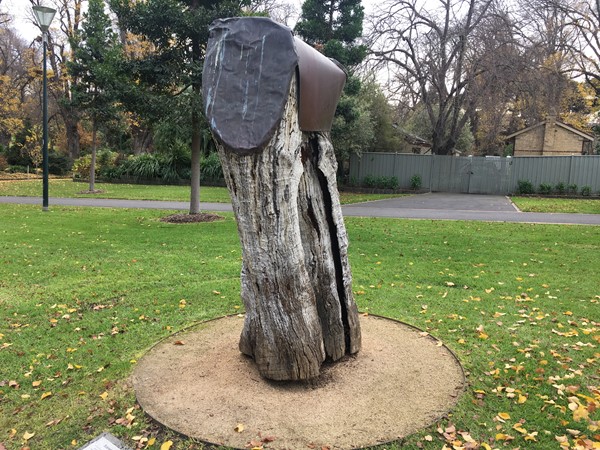
The Scarred tree is a reminder Wurundjeri Aboriginal people that lived in the area before European settlement of Melbourne. Scarred trees are trees which have had bark removed by indigenous Australians for the creation of canoes, shelters, shields and containers. Bark was removed by making deep cuts in a tree with a stone axe. The area of bark removed is typically regular in shape, often with parallel sides and slightly pointed or rounded ends, and the scar usually stops above ground level.
The Tudor Village is a series of model buildings which represent a typical Kentish village built during the "Tudor" period of English history. The village is composed of various thatched cottages, a village church, school, hotel, barns, stocks, pump, and all public buildings which make up one of the delightful villages. Also included is a scale model of Shakespeare's home and Anne Hathaway's cottage.
The Gardens also have a wonderful playground with dragon slide and giraffe swing.
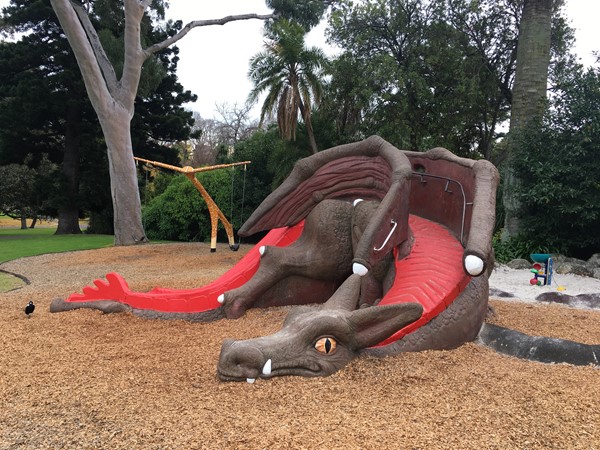
Note: There are no BBQs or picnic tables in the Fitzroy Gardens.
Photos:
Sculptures and Monuments:
Fairies' Tree
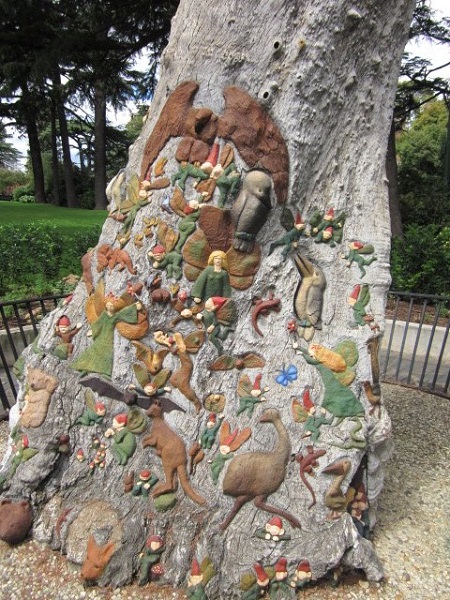
Decorated tree by Ola Cohn (1934)
In undertaking the Fairies' Tree, Cohn was inspired by Ivor Innes' Elfin Oak, located in Kensington Gardens, London. Commencing work on the Fairies' Tree in 1931, Cohn spent three years carving the ancient red gum. She suffered the discomfort of weather extremes, stings by mosquitos and bees-which had made the old tree stump their home-and repeated acts of vandalism on the work.
Cohn worked in a fittingly organic fashion, using the trunk's natural irregularities to inspire her myriad carvings of Australian and European fairies, dwarfs, gnomes, imps, goblins, elves and animals. Upon completion in May 1934, the tree was gifted to the city's children. Cohn says she carved the tree 'mostly for fairies and for those who believe in them'.
In 1977, the trunk was extracted from the ground for chemical treatment and for the removal of rotten wood. Following treatment, it was mounted on a concrete base in an effort to preserve the work. It underwent further restoration work in 1997, and continues to get regular conservation treatment.
River God Fountain (aka Old Man Fountain, and Neptune)
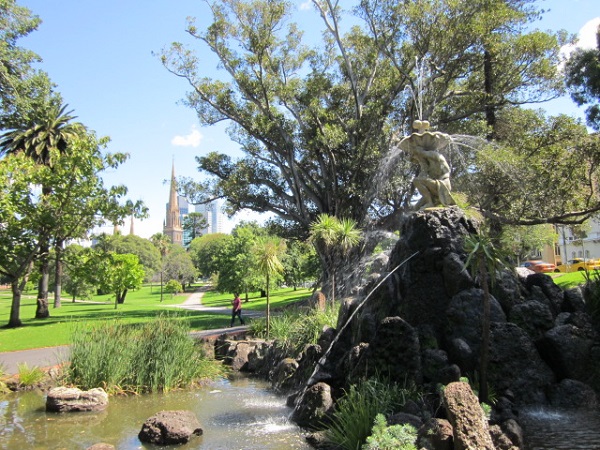
Stone and cement fountain by Charles Summers (1862)
While Summers was the sculptor of this larger than life-size statue, which holds aloft an opened clamshell-shaped fountain, it was created in collaboration with civil engineer Clement Hodgkinson who was responsible for the development of the Fitzroy, Flagstaff and Treasury Gardens. Hodgkinson was also instrumental developing the Yan Yean project, a reticulated water supply that was essential for the growing city and which allowed its gardens to exist on the scale they did. Based on works by Italian sculptors of the Renaissance, River God celebrated this permanent water supply for Melbourne.
Diana And The Hounds
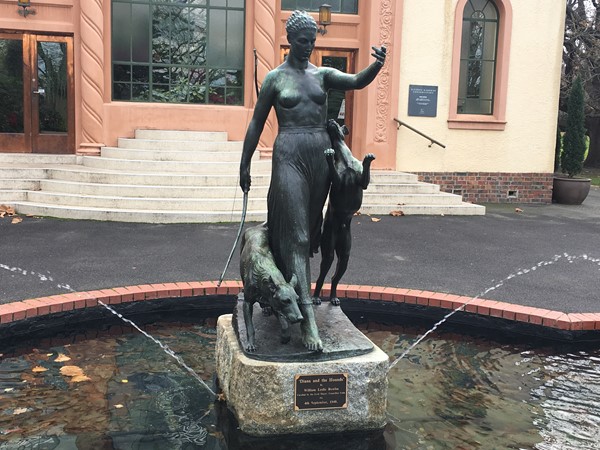
Cast bronze statue on granite pedestal by William Leslie Bowles (1940)
In 1935, three of Bowles' designs were selected to replace the existing and much deteriorated statuary in Fitzroy Gardens. His Diana and the Hounds replaced a cement statue copied from the Roman Diana, Goddess of Mood and Contemplation, held in the Vatican.
Location: In the Fitzroy Gardens Conservatory.
Captain Cook Statue
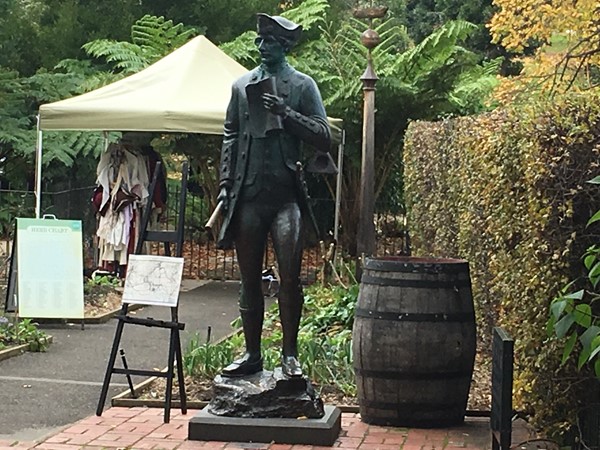
Bronze statue by Marc Clark (1973)
In 1973, Marc Clark was commissioned to create this life-size, bronze statue of Captain James Cook for the opening of the Endeavour Hills housing estate. It was later donated to the City of Melbourne for display near Cook's Cottage, in Fitzroy Gardens. It was installed in July 1997.
Location: At Cooks Cottage.
Model Tudor Village
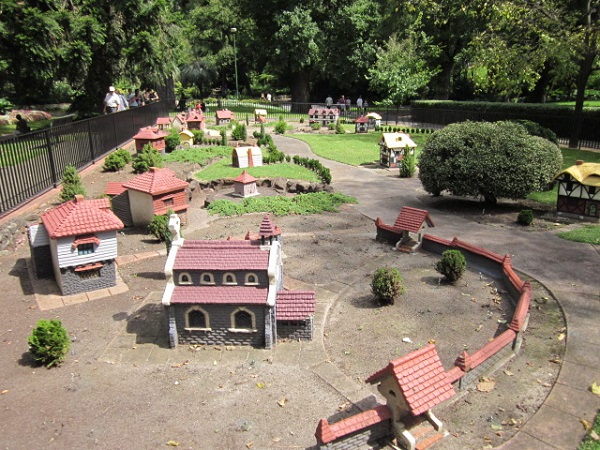
Painted cement model by Edgar Wilson (1948)
Edgar Wilson was a 77-year-old pensioner living in England when he built this model Tudor village in the late 1940s. It is one of three villages he built, and it represents a typical Kentish village during the Tudor period. As well as comprising private residences and public buildings, the village is replete with the residences of William Shakespeare and Anne Hathaway.
The Tudor village was donated to the city of Melbourne through the City of Lambeth, England, as a gift to the people of Melbourne in appreciation for the generosity they demonstrated in sending food to Britain during World War II.
Boy On A Turtle
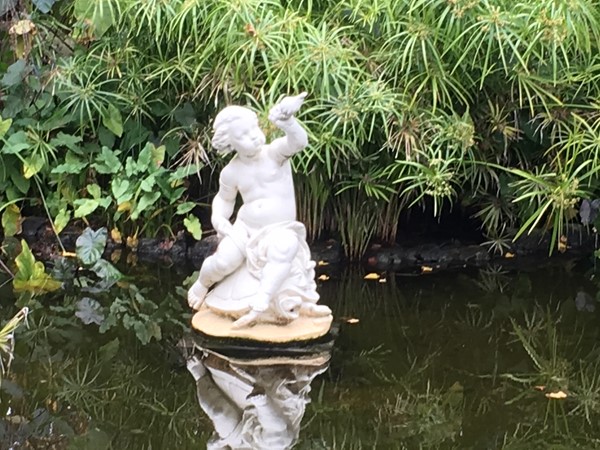
Bronze statue by unknown artist (c. 1850)
This bronze sculpture of a cherub-like boy astride the back of a turtle has led a long and eventful life. Boy on a Turtle was erected in Carlton Gardens during the 1850s, where it first stood in a prominent position on the corner of Victoria and Rathdowne streets, before being relocated in 1937 to the Nicholson Street side of the gardens. Some years later the statue was moved to its present home in Fitzroy Gardens; appropriately, Boy on a Turtle sits in the lower lake of the gardens. In March 1977, this popular statue was stolen from the gardens - a remarkable feat considering the great weight of the bronze. Two and a half years after the sculpture's disappearance, police found it in an abandoned Richmond car park.
Boy And Pelican
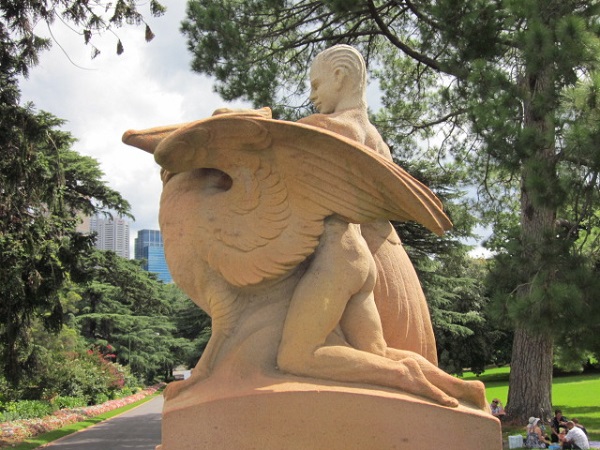
Pyrmont sandstone sculpture by William Leslie Bowles (1936)
The boy sits atop the back of a pelican, its wing outstretched. This sculpture is one that replaced the much deteriorated plaster statuary in Fitzroy Gardens, which Clement Hodgkinson had donated in the 1860s. The head of the boy was replaced in 1973, the statue having fallen victim to vandalism.
Location: Hotham Street entrance.
Boy And Urn
Bronze fountain by unknown artist
Little is known of the history of this work. It was erected in the Fitzroy Gardens around 1900. Positioned atop a rockery, the fountain features a bronze figure of a small boy tipping an urn held on his shoulder, from which water spills into the bowl below. The erection of this work was part of a tradition of placing classically inspired, or copied, statuary in the city's gardens, a practice that ceased by the 1930s.
Dolphin Fountain
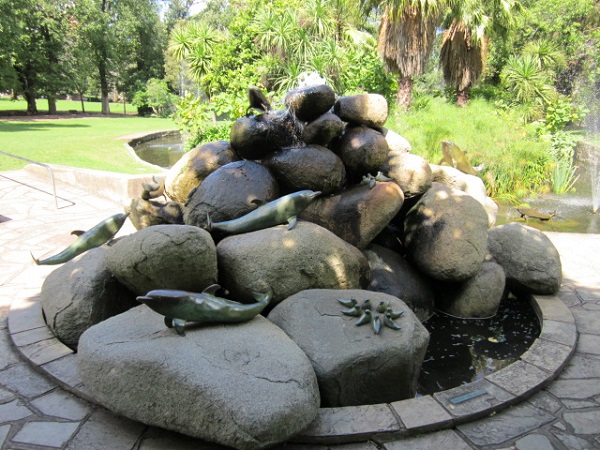
Bronze and granite fountain by June Arnold (1982)
The fountain comprises around 100 aquatic birds and animals, such as dolphins, crabs and seahorses, sculpted in bronze and fastened to a small pyramid of granite boulders, over which water cascades.
Location: Northern bank of the ornamental lake.
Mermaid And Fish
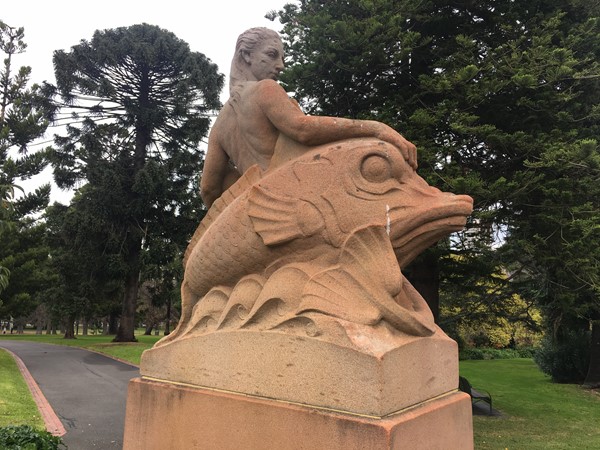
Pyrmont sandstone sculpture by William Leslie Bowles (1936)
This work in Pyrmont sandstone depicts a mermaid with a large fish, supported by waves. In many cultures there is a tradition of representing the mythological mermaid, but in Western art this figure is often associated with seduction and death.
Location: Hotham Street entrance.
Temple Of The Winds Rotunda
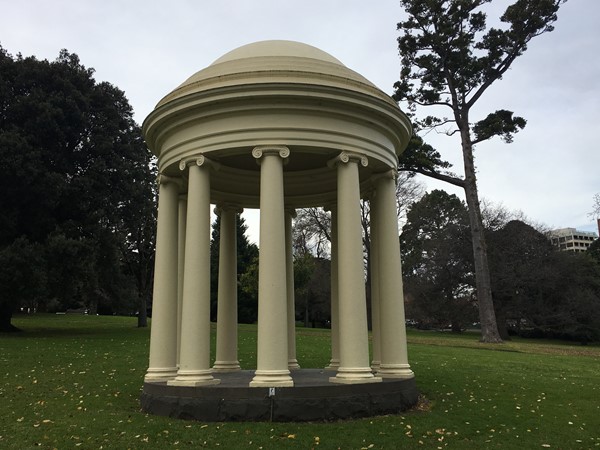
Masonry and bluestone rotunda by Thomas Julian & Co. (1873)
Temple of the Winds is a circular masonry structure, with ten columns supporting a domed roof; it rests on rough, dressed bluestone footings. This rotunda is one of the oldest structures in the Fitzroy Gardens and is very similar the Temple of the Winds erected by William Guilfoyle in the Royal Botanic Gardens and dedicated to Governor La Trobe.
Mary Gilbert Memorial
Cement fondue bust by Ailsa O'Connor (1975)
Ailsa O'Connor was active in a number of organisations that sought to achieve equality for women, such as the Women's Progressive Movement. O'Connor's interest in feminism and women's history is apparent in this work, which in part carries the inscription: 'Mary gave birth to a son, the first white child born in the Port Phillip settlement, on 29 December 1835. As servants of John Pascoe Fawkner, Mary and her husband James Gilbert were in the original party of settlers who landed from the schooner Enterprise on 30 August 1835.' O'Connor claimed of Mary Gilbert that she was a 'sort of proletarian founding mother'.
Location: In the Fitzroy Gardens Conservatory.
People's Path
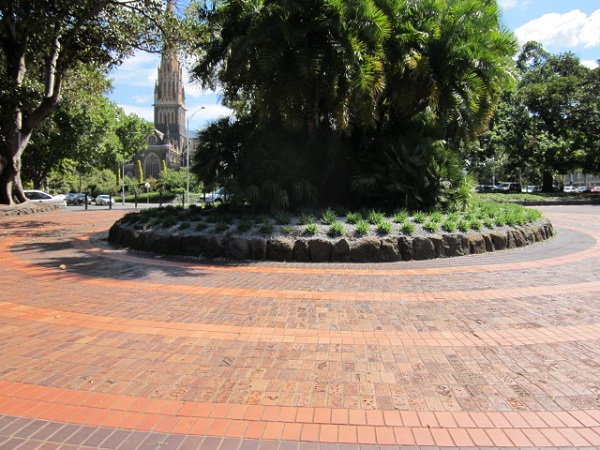
Terracotta bricks and ceramic tiles by Ian Sprague (1978-79)
People's Path originates from a community art project, providing a metaphorical means by which the community can take ownership of a public space. This work comprises approximately 10 000 standard terracotta bricks set in the three concentric circles surrounding a raised garden bed with plantings of palms and ivy. The exposed face of each brick features a hand etched drawing. The associated plaque advises that these 'tiles' were made by the People of Victoria on the opening day of the Arts Victoria 78 Craft festival.
Location: Corner of Landsdowne Street and Cathedral Place.
Conservatory Fountain (Boy With Serpent, and Ornamental Fountain)
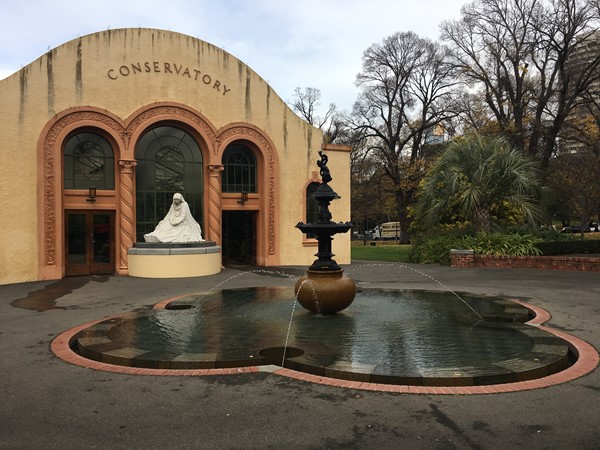
Cast-iron and granite drinking fountain by unknown artist (c. 1900)
This Victorian, two-tiered, ornamental drinking fountain features a snake coiled around a boy with webbed feet - a typical 19th-century Italianate style. The lower tier was replaced with a smaller base when the fountain was restored in 1996. Originally, passers-by would have drunken from the water held in its lower tier. With shifts in hygiene standards and technology, a bubbler was installed. In 1996, it was placed in a large pond (minus its bubbler) and relaunched as the Conservatory Fountain.
Location: In the Fitzroy Gardens Conservatory.
Grey Street Fountain
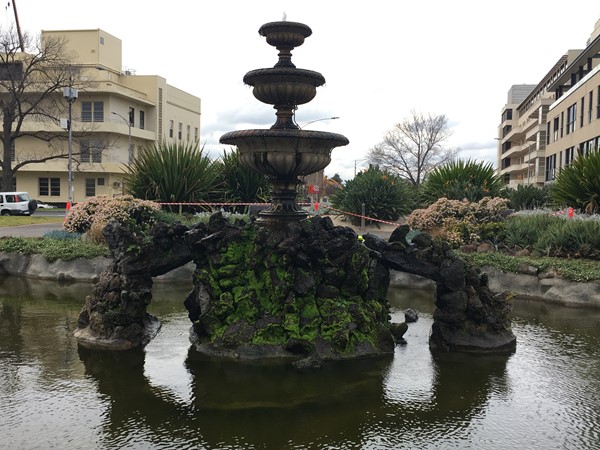
Cement fountain by unknown artist (1863)
Known simply as the Grey Street Fountain, this is one of the oldest fountains in Melbourne's public gardens. Manufactured by Garnkirk, its simple design comprises three tazza bowls of diminishing size set on a volcanic-rock outcrop within a pool.
The original concept incorporated a pool 100 feet (30.5 metres) long, with a central cluster of rocks from which water was to be ejected to nearly 50 feet (15.25 metres), though this appears not to have been realised. The pond was filled with small islands of aquatic plantings and Sydney couch grass.
In 1968, Melbourne City Council wanted to replace the fountain with an elaborate sundial to commemorate the recently deceased Prime Minister Harold Holt. When the council's intention became known, some 800 people petitioned against the fountain's removal. In the face of such opposition, plans for the sundial were scrapped and the Grey Street Fountain retained. The fountain is the only surviving ornament in its original position remaining in Fitzroy Gardens from that period.
Location: Opposite Grey Street
Bandstand
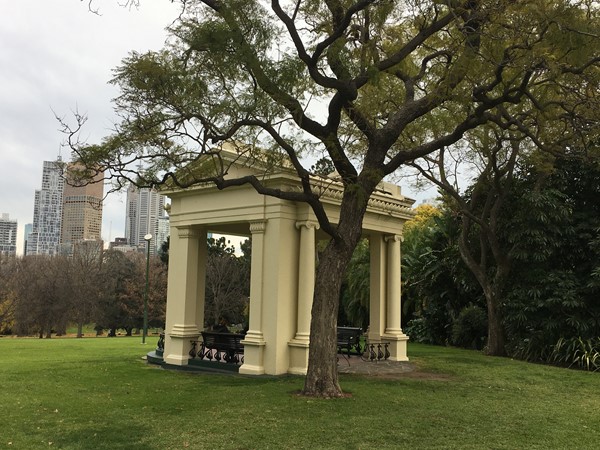
Concrete bandstand by George Dodd (1864)
George Dodd designed and constructed this elegant, Corinthian-style bandstand in 1864. Its sides are enclosed with low cast-iron fencing and its roof is tiled. Standing stately atop the rise on the eastern side of the Fitzroy Gardens, it affords views back over the historical gardens to the bustling city centre.
Statue Of Meditation
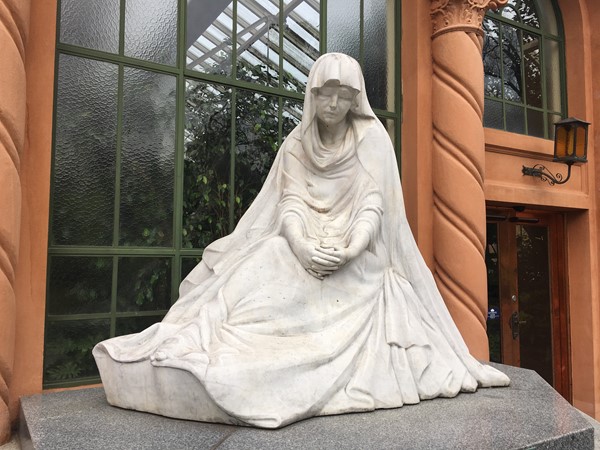
Marble statue by Robert Delandere (1933)
This statue once divided the critics. Brought to Australia by Madame Gaston-Saint, an Australian who married a wealthy Frenchman, the statue's intended destination was the Victorian town of Rheole, where it would memorialise her father. When this failed to transpire, it was erected in Fitzroy Gardens. Just prior to its unveiling, acclaimed sculptor Paul Montford complained in a letter to the mayor: 'In my opinion its artistic value is far below any other statuary in Fitzroy Gardens, and it is probably the worst figure in any public place in Melbourne.'
Location: In the Fitzroy Gardens Conservatory.
Conservatory Flower Sculpture
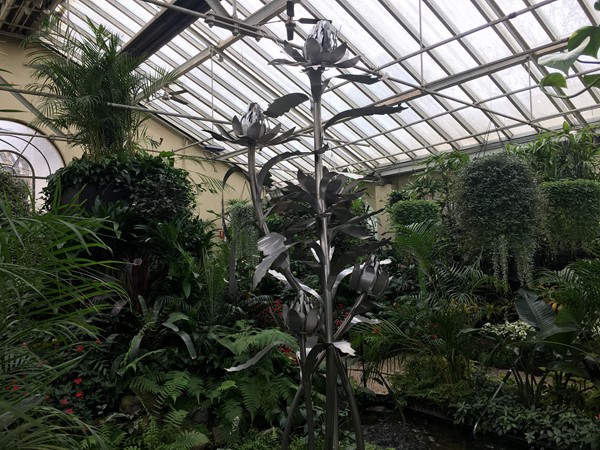
Location: In the Fitzroy Gardens Conservatory.
Conservatory Sundial
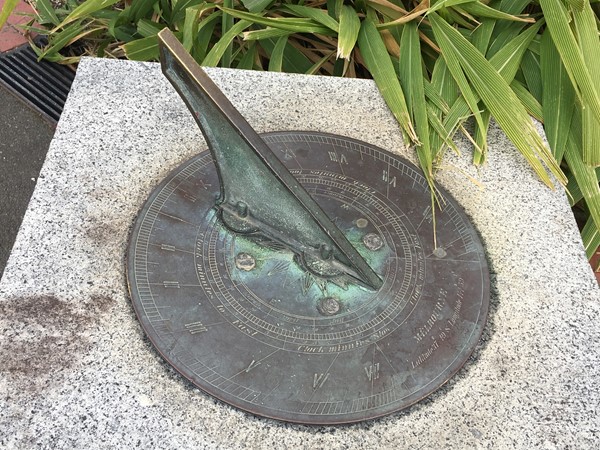
Location: North side of the Fitzroy Gardens Conservatory.
Fitzroy Gardens Urns
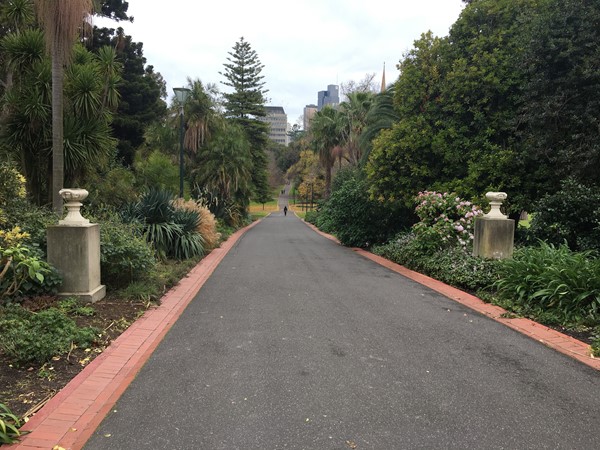
Location: Beside a path running east - west through the Fitzroy Gardens.
Location
Cnr Clarendon Street and Grey Street, East Melbourne 3002 View Map
Web Links
→ www.fitzroygardens.com








